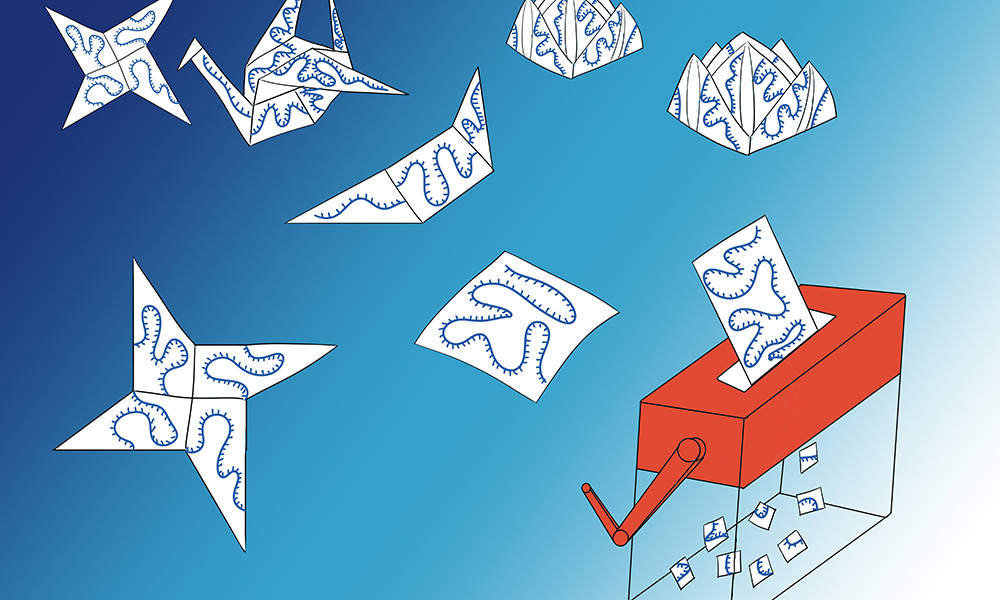
Deciding when to destroy mRNA
World-renowned structural biologist and EMBL alumna Elena Conti opens a window into the fascinating world of the life and death of mRNA at the next Kafatos Lecture on 20 October in Munich

It took the COVID pandemic to make mRNA a household term. However, researchers like Elena Conti have long been observing the crucial cellular roles that messenger RNA (mRNA) molecules play in transferring genetic information to our bodies’ protein-making machinery.

On 20 October at 18:00 CEST, Conti will share her research insights at EMBL’s second annual Kafatos Lecture at Museum Mensch und Natur, Schloss Nymphenburg, in Munich, in a talk titled, ‘Should it stay or should it go: how cells control the life and death of mRNA molecules’.
While mRNA evokes thoughts of COVID vaccines for many people, these molecules already exist in our cells. The cell synthesises them when needed and eliminates them when their function is fulfilled.
To maintain a well-functioning and healthy state, our cells must protect functional mRNA molecules and degrade redundant/retired or defective ones – as well as other types of faulty RNA. This process can be likened to the efficient management of a busy office, where useful documents are retained while unnecessary or potentially damaging information is disposed of.
Just like office paper-shredding machines, our cells have molecular nanomachines that also ‘shred’ unwanted information, in this case mRNA. If these molecular nanomachines break down, our bodies accumulate unwanted mRNA molecules, with harmful consequences. Conti studies how the quality-control nanomachines in our cells recognise unneeded or defective mRNA and degrade them. Conversely, she also explores how these nanonmachines know not to shred or degrade correctly packaged mRNA.
Open and free to the public, Conti’s talk will highlight insights about the molecular marvels that govern the packaging and shredding of mRNA in our cells. Registration to attend in person or online is available here.
Conti, a distinguished biochemist and structural biologist, is recognised as a world-leading authority in the study of protein-RNA complexes. In 2008, she – along with EMBL alumna Elisa Izaurralde – was recognised with Germany’s most prestigious research award, the Gottfried Wilhelm Leibniz Prize, for ‘fundamental new insights into intracellular RNA transport and RNA’.
The Kafatos Lecture series was launched in 2021 to honour the considerable legacy of Fotis Kafatos, former EMBL Director General and Founder and first President of the European Research Council (ERC). This lecture series aims to bring groundbreaking and relevant life science research to the worldwide public, making it accessible and highlighting its day-to-day societal impact.
This lecture is made possible thanks to the generous support from the Bodossaki Foundation, one of the largest privately owned public-benefit organisations in Greece.


